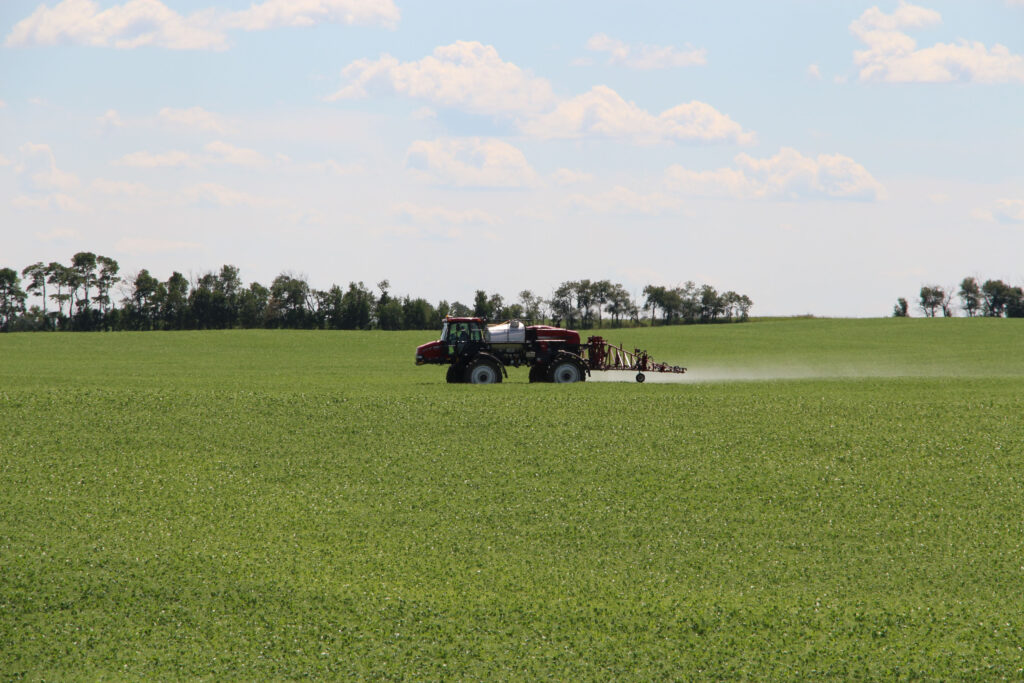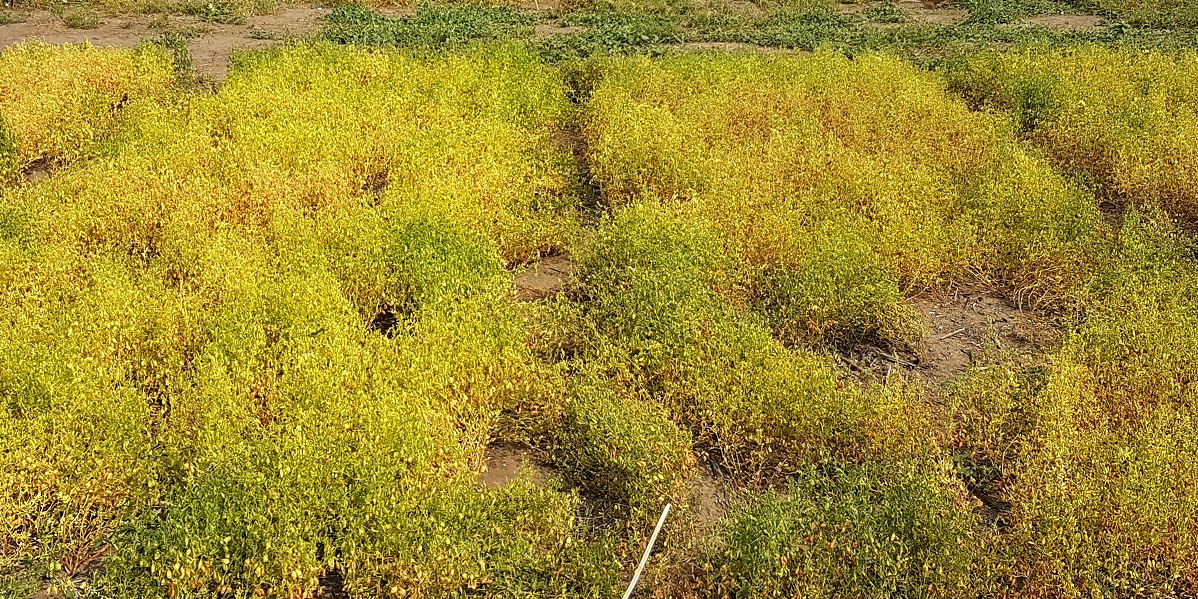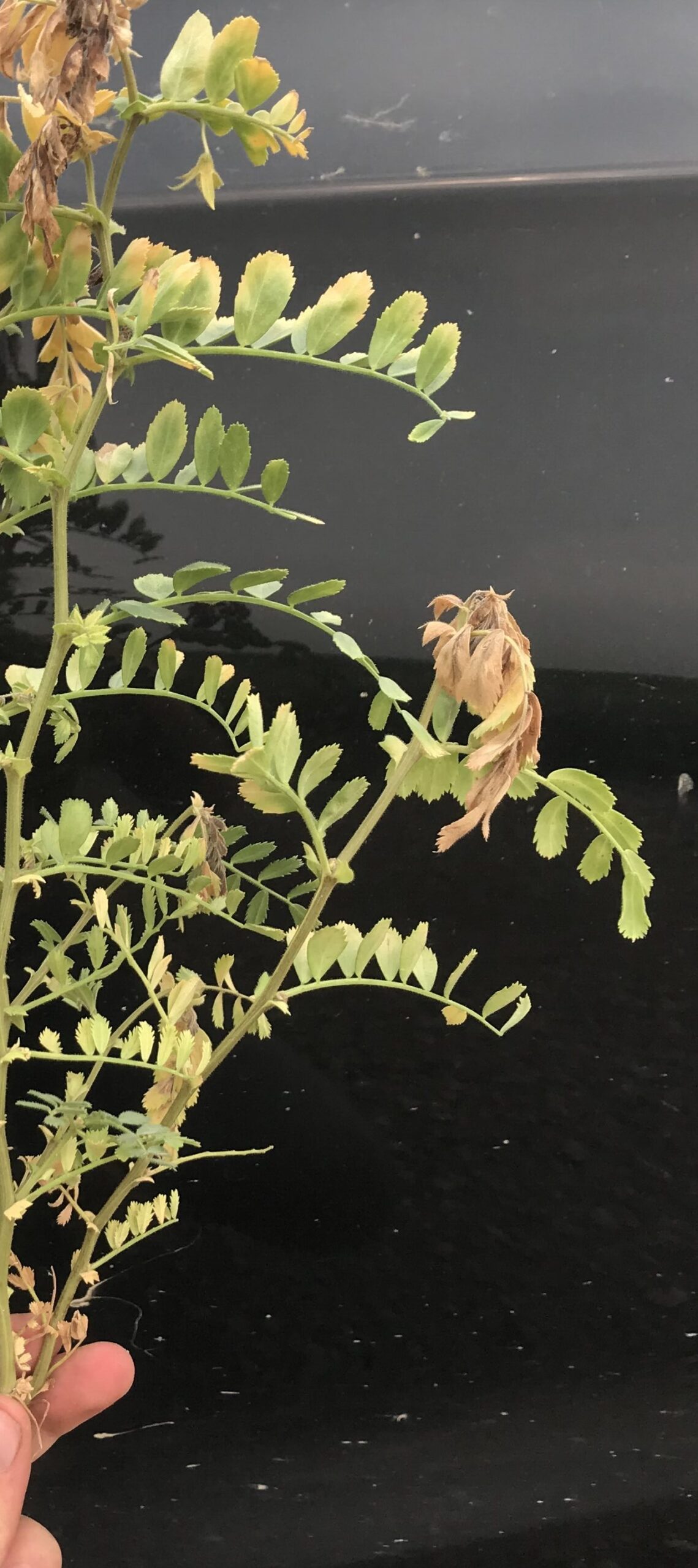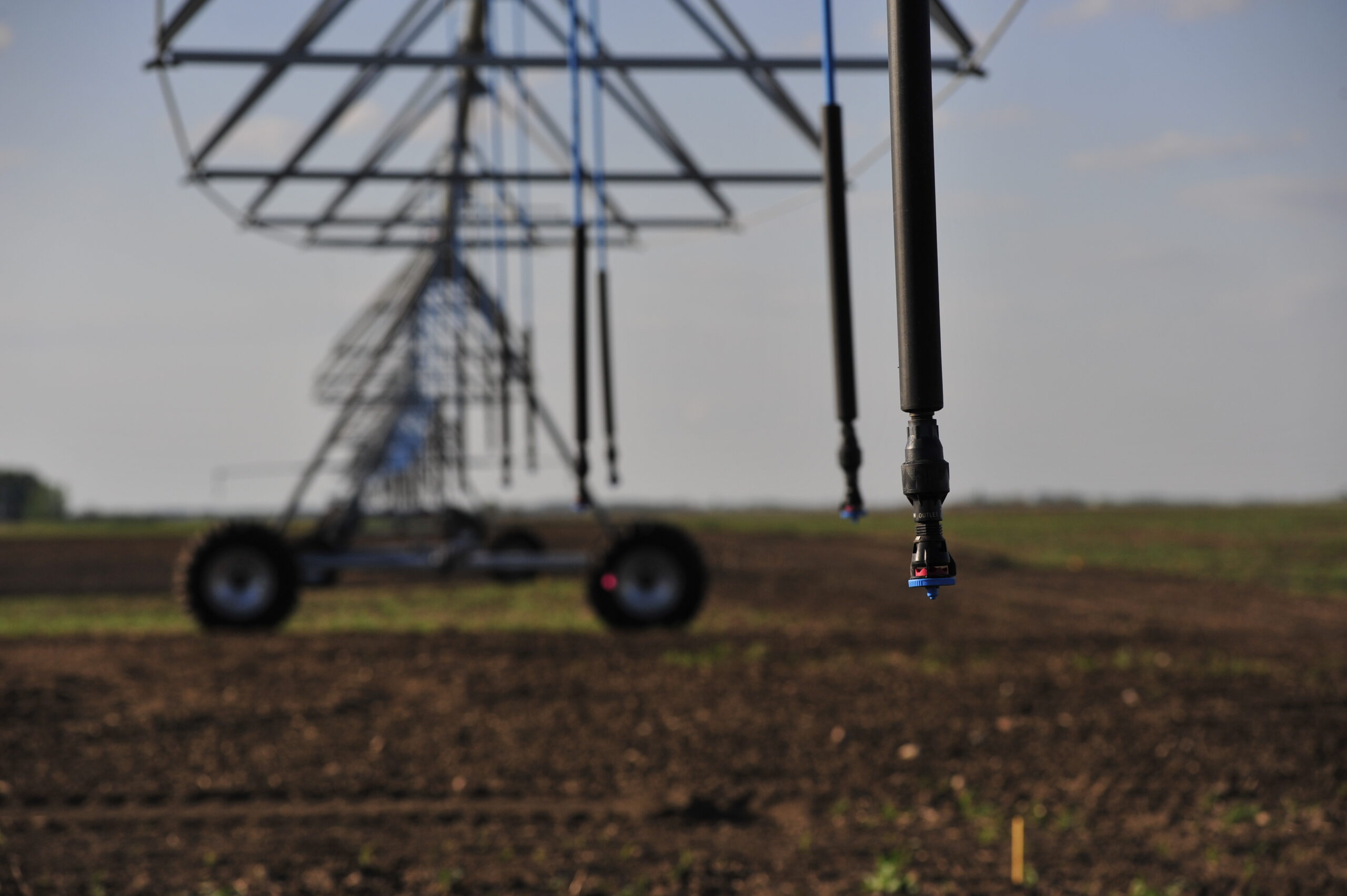By Donna Fleury, P.Ag.
Implementing good spray management practices includes minimizing drift and risk to sensitive crops, as well as proper sprayer tank cleanout methods. This is particularly important for pulses and other sensitive crops, which can be very susceptible to injury from some herbicide chemistry residues.
It is important to not wait to clean out sprayers until just prior to moving to a sensitive crop. The best practice is to develop a regular routine. Clark Brenzil, the Provincial Specialist, Weed Control with the Saskatchewan Ministry of Agriculture recommends growers cleanout the sprayer each time the power unit is going to be turned off long enough to cool, even if spraying the same product(s) the following day. This typically occurs at the end of each spray day and when repairs are required. Otherwise, running continually without a tank cleanout allows product and residues to accumulate in the nooks and crannies of the sprayer (not just the tank). Those accumulations will be that much harder to clean out as time goes on.
The best routine to get into is before parking the sprayer for the day, thoroughly drain the remaining spray solution and start the thorough cleanout procedure as per the product label, first by rinsing once with water. Initiate the cleaning solution portion of the cleanout process and circulate throughout the plumbing, including booms and nozzles, then let sit until the next morning. hen empty, rinse with clean water as required, and move to the next spray operation. Allowing the solution to sit in the sprayer overnight gives the cleaning solution that much longer to do its job and it will be much more thorough. However, do not allow the cleaner to sit longer than overnight as some cleaners can be corrosive, so rinse properly with water the following day.

Source: Tom Wolf, Agrimetrix Research and Training
Tom Wolf of Agrimetrix Research and Training reminds growers to always be aware of what was in the spray tank before moving to a new crop. Different products have different considerations, with properties such as dry formulation, poor water-solubility, and high potency in low doses, resulting in greater potential for sprayer contamination. For pulses, some Group 2 products can be very harmful even though there are some Group 2 products registered for use on pulse crops. The reason Group 2 products have been a focus is because they have a tendency to get hung up in the sprayer and the products are very effective at very small doses. Growers need to be careful when spraying pulse crops, and other sensitive crops like canola.
In terms of cleanout, the Group 9 and 10 herbicides such as Roundup® or Liberty®, which are water soluble and not very potent at low doses, tend to be easier to clean out of the spray tank and rarely create problems. However, many of the Group 4 products such as 2,4-D and MCPA can be formulated as esters, which are oil soluble and more challenging to clean out of the sprayer tank, hoses, and other parts. Selecting the right kind of commercial cleaner and using surfactants particularly with oil soluble products is recommended. Some products, such as Group 2 sulfonylurea (DuPont Group 2s) and triazolopyrimidines (Dow Group 2s) compounds dissolve better at high pH levels, so adjusting the pH by adding ammonia may be required. Consider sprayer cleaning as similar to washing dishes: clean immediately, use the right cleaning products, and use warm water.
Wolf notes that one of the recent serious challenges facing pulse growers is if they are growing both the new Roundup Ready® Xtend (dicamba-resistant) soybeans, and the more traditional non-dicamba tolerant soybeans. The non-dicamba tolerant soybeans are incredibly sensitive to dicamba, and injury symptoms are being noted on soybeans at rates that typically were not considered a problem. Very thorough tank cleaning and dilution of any remainders of XtendiMax® or Engenia® herbicides is essential in this case. Growers may also want to consider spraying cereals or another crop in between dicamba tolerant and non-dicamba tolerant soybean crops as one more strategy for reducing potential problems. Therefore growers must be very diligent on their cleanout strategies before any spray operation.
Recommended Sprayer Cleanout Strategies:
1. Be Prompt
The first step is to be prompt and ready to do the initial cleanout in the field. Clean out the sprayer tank right after spraying the product. If the product is allowed to dry on the surface of the tank and hoses, it is much harder to clean. Be prepared, have a clean water tank on the back of the sprayer, and rinse down nozzles in the tank. The first stage of cleanout can be done right in the field.
2. Dilute
The second step is to dilute the remaining volume. It is impossible to get rid of everything, there is always some dead space the product can get stuck in such as in the sump, some of the tubing leading to the pump and circulating back to the tank, and other places. The best strategy for dilution is to use the classic triple rinse, or in some cases quadruple or quintuple rinse by using small amounts of water and cleaning multiple times. For example, dicamba may need to be diluted more than 1,000-fold.
Wolf has developed a Tank Rinse Dilution Calculator to help growers determine how much dilution and rinsing is required.
3. Decontaminate
The third step is to decontaminate the sprayer tank and ensure everything that came in contact with the spray mix has been cleaned, including boom lines, screens, filters, tubing, valves, etc. Dilution alone is not enough. However, always use smaller amounts of water multiple times as large of amounts of water at one time can be more difficult to manage. Although it might be tempting to just run the mixture out on the ground it is not recommended. This can lead to soil and crop damage, contamination of surface and groundwater sources, and other issues.
For growers using specialty foliar fertilizer and other pesticide tank mixes, Wolf recommends doing the jar test first to make sure they are compatible and will not cause any problems in the tank. Some mixtures can create a gel, which could become an almost impossible task of cleaning out of the tank, or leave deposits and residues. To do the jar test, fill a jar half full of water, then add the proportional amount of the chemistries being mixed together. Add the rest of the water to the jar and let stand. Decide whether or not the mixture is compatible with your system, and what the cleanout strategy would have to be.
Prevention is the best strategy, so plan ahead, implement a regular sprayer cleaning protocol, and always use best practices throughout the spray operation. This not only improves safety, efficacy, and timing, but ultimately helps optimize crop production and yield potential.
For more information visit Sprayers 101.



